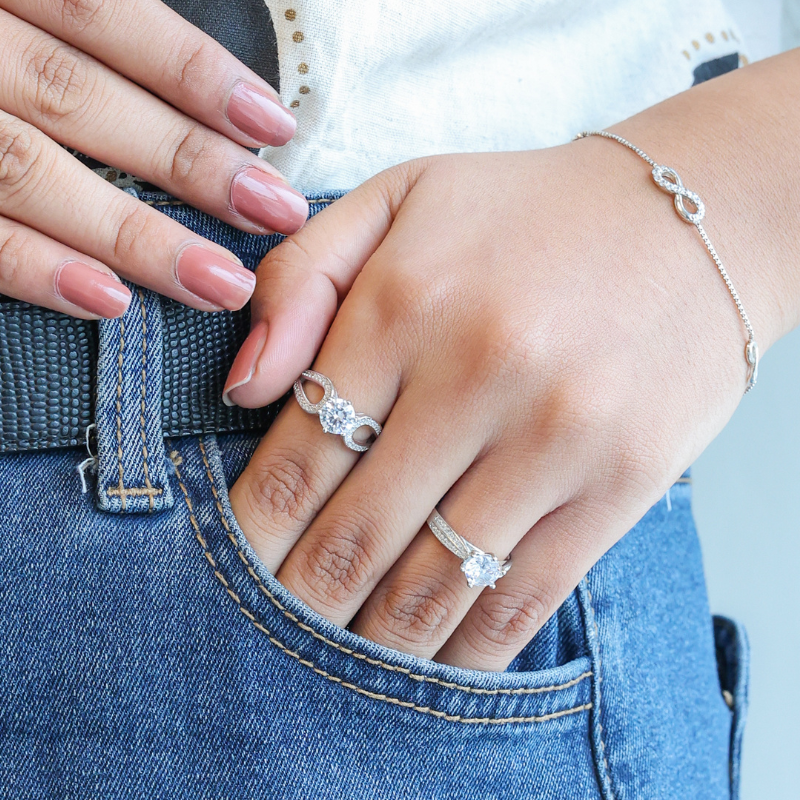Sterling silver has captivated hearts for centuries with its luminous shine and versatile appeal. But have you ever wondered about the journey this precious metal takes, from deep within the earth to gracing a delicate necklace or a bold bracelet? Beyond its beauty, the creation of sterling silver jewelry is a fascinating business, blending artistry, craftsmanship, and smart entrepreneurship.
The Raw Material: A Journey from the Earth

It all begins with silver ore, extracted from mines around the world. This raw material undergoes a rigorous refining process to separate the pure silver. While pure silver is beautiful, it's also very soft and easily damaged. This is where the magic of "sterling" comes in.
Sterling silver is an alloy, meaning it's a mixture of metals. By definition, sterling silver must contain 92.5% pure silver and 7.5% other metals, usually copper. This small addition of copper significantly increases the metal's strength, durability, and resistance to tarnish, making it ideal for everyday wear.
Design and Inspiration: The Creative Spark

Before any metal is shaped, a design comes to life. This is often the most creative phase, where jewelers draw inspiration from nature, architecture, cultural motifs, or abstract concepts. Sketching, computer-aided design (CAD), or even carving wax models are common methods to visualize the final piece. A strong design is crucial, not just for aesthetic appeal, but also for its feasibility in production and its marketability.
Crafting the Masterpiece: Techniques and Tools

Once a design is finalized, the skilled hands of jewelers transform raw sterling silver into wearable art. This process involves a variety of traditional and modern techniques:
- Melting and Casting: Silver grains are melted and poured into molds to create initial shapes or intricate components.
- Fabrication: This involves hammering, filing, sawing, soldering, and forming silver sheet and wire into desired shapes. This method requires immense precision and patience.
- Stone Setting: If the design includes gemstones, they are carefully secured into bezels or prongs.
- Finishing: The piece is polished, buffed, and sometimes given special treatments like oxidation to create an antique look, or rhodium plating for extra shine and tarnish resistance.
The Business Side: From Bench to Buyer

The journey doesn't end at the jeweler's bench. Turning passion into a profitable business requires strategic thinking:
- Sourcing Materials: Establishing reliable suppliers for sterling silver, gemstones, and tools is crucial for consistent quality and cost control.
- Pricing Strategy: This involves calculating material costs, labor, overhead, and desired profit margins. Positioning the brand – whether as a luxury, artisanal, or accessible brand – also influences pricing.
- Marketing and Sales: From creating an appealing online presence (e-commerce website, social media) to participating in craft fairs, pop-up shops, or wholesale markets, effective marketing is key to reaching customers.
- Branding and Storytelling: What makes your sterling silver jewelry unique? Is it a particular style, ethical sourcing, custom designs, or a charitable mission? A strong brand identity resonates with customers and builds loyalty.
Challenges and Opportunities
The sterling silver jewelry business, like any other, has its challenges. Fluctuating silver prices, competition from mass-produced jewelry, and the need to constantly innovate designs are constant pressures. However, there are also immense opportunities. The demand for handcrafted, unique, and ethically sourced jewelry continues to grow. Jewelers who can offer personalized experiences, exceptional quality, and connect with their audience through authentic storytelling are well-positioned for success.
From the depths of the earth to a cherished adornment, the journey of sterling silver jewelry is a testament to nature's beauty, human ingenuity, and the enduring allure of finely crafted objects.









